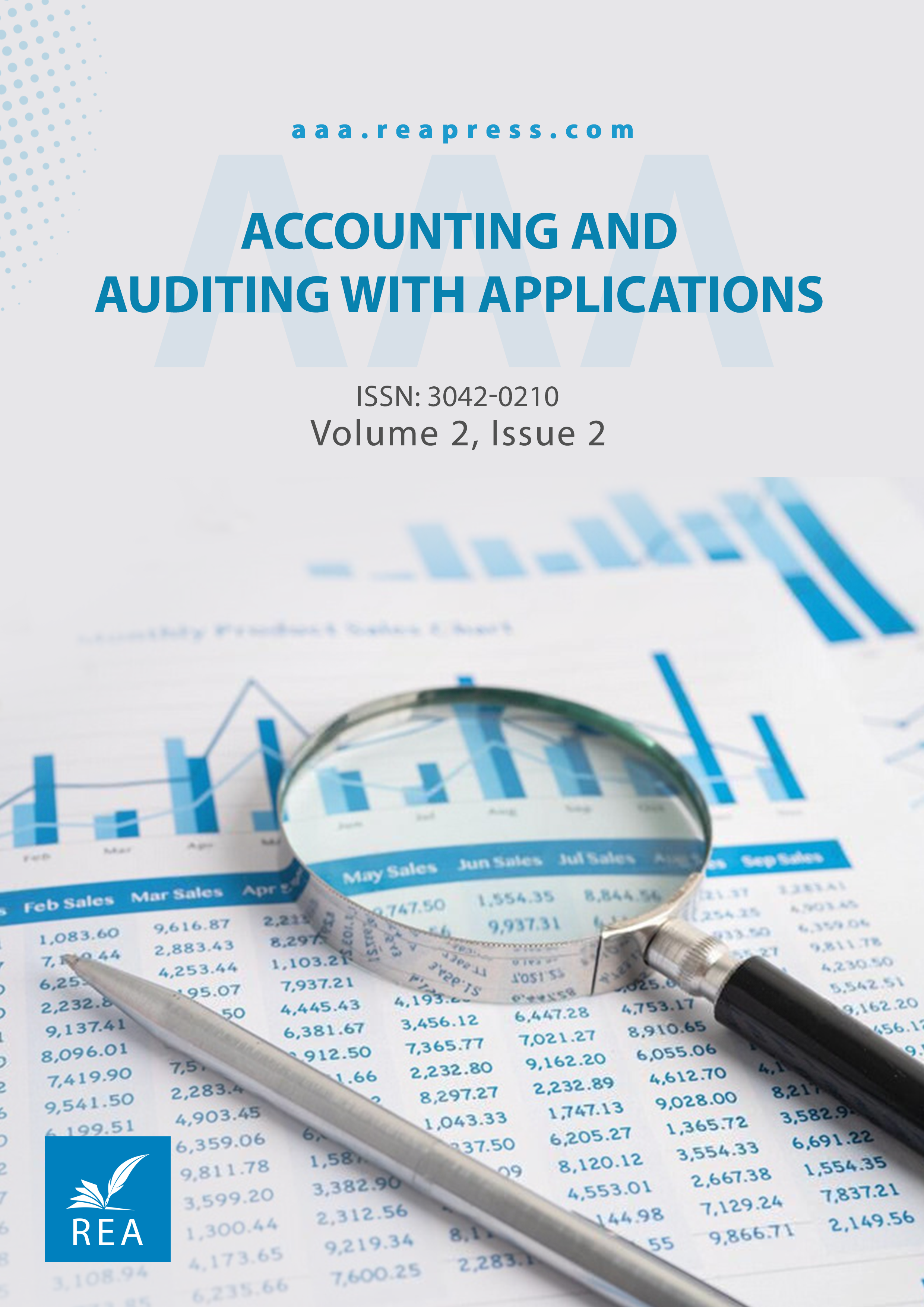Long-Term Profitability Prediction under Taxation Changes: Efficiency Analysis of Companies Using DEA Model
Abstract
This research focuses on predicting the long-term profitability of companies in the context of tax regulation changes using the Data Envelopment Analysis (DEA) model. The study adopts an applied approach and employs a descriptive-analytical methodology. To collect the necessary data, financial information from companies listed on the Tehran Stock Exchange was analyzed over a five-year period, spanning from 2016 to 2021. The research aims to assess how changes in tax regulations influence both the profitability and efficiency of companies. By utilizing the DEA model, this study provides a quantitative evaluation of the impact of tax adjustments on corporate financial performance. The findings reveal that tax changes have a significant effect on long-term profitability, with the potential to either improve or diminish a company's financial efficiency and overall profitability. Furthermore, the DEA model has demonstrated its ability to accurately forecast corporate profitability under various tax scenarios. This predictive power makes the model a valuable tool for financial analysts, policymakers, and corporate managers. By leveraging DEA-based insights, decision-makers can better navigate tax policy adjustments, optimize financial strategies, and enhance overall corporate performance.
Keywords:
Profitability prediction, Tax changes, Company efficiency, Tehran Stock ExchangeReferences
- [1] Dixit, A., Clouse, C., & Turken, N. (2019). Strategic business location decisions: Importance of economic factors and place image. Rutgers business review, 4(1), 73–91. https://ssrn.com/abstract=3378663
- [2] Mintz, J. M., & Weichenrieder, A. J. (2010). The the indirect side of direct investment: multinational company finance and taxation. MIT press. https://www.jstor.org/stable/j.ctt5hhc6c
- [3] Mirzaei, Z., Nayebzadeh, S., & Hataminasab, S. (2021). Conceptual mapping of social marketing mix in tax compliance. Iranian journal of management sciences, 16(62), (In Persian). 55-82. https://journal.iams.ir/article_355_en.html?lang=fa
- [4] Pajooyan, J., & Darvishi, B. (2010). The structural reforms in Iran’s tax system. Journal of tax research, 18(8), 9–48. http://taxjournal.ir/article-1-114-en.html
- [5] Ezeife, E., Eyeregba, M. E., Mokogwu, C., & Olorunyomi, T. D. (2024). Integrating predictive analytics into strategic decision-making: A model for boosting profitability and longevity in small businesses across the United States. World journal of advanced research and reviews, 24(2), 2490–2507. http://dx.doi.org/10.30574/wjarr.2024.24.2.3635
- [6] Bobitan, N., Dumitrescu, D., & Burca, V. (2023). Agriculture’s efficiency in the context of sustainable agriculture—a benchmarking analysis of financial performance with data envelopment analysis and malmquist index. Sustainability, 15(16), 1–27. https://doi.org/10.3390/su151612169
- [7] Picas, S., Reis, P., Pinto, A., & Abrantes, J. L. (2021). Does tax, financial, and government incentives impact long-term portuguese smes’ sustainable company performance? Sustainability, 13(21), 1–16. http://hdl.handle.net/10400.19/7360
- [8] Cloyne, J., Martinez, J., Mumtaz, H., & Surico, P. (2022). Short-term tax cuts, long-term stimulus. National Bureau of Economic Research. https://www.nber.org/papers/w30246
- [9] Shafiq, M. N., Hua, L., Bhatti, M. A., & Gillani, S. (2021). Impact of taxation on foreign direct investment: empirical evidence from Pakistan. Pakistan journal of humanities and social sciences, 9(1), 10–18. https://doi.org/10.52131/pjhss.2021.0901.0108
- [10] Fischer, L., Heckemeyer, J. H., Spengel, C., & Steinbrenner, D. (2022). Tax policies in a transition to a knowledge-based economy: the effective tax burden of companies and highly skilled labour. Intertax, 50(4), 286–321. https://doi.org/10.54648/taxi2022036
- [11] Devereux, M. P. (2023). International tax competition and coordination with a global minimum tax. National tax journal, 76(1), 145–166. https://www.journals.uchicago.edu/doi/abs/10.1086/723198
- [12] Ehteshami, S., & Elfati, S. (2016). Comparative study of value added tax in iran with other countries. International conference on modern research in management, economics and accounting (In Persian). SID. https://www.sid.ir/paper/827983/fa
- [13] Anastasiou, A., Kalligosfyris, C., & Kalamara, E. (2023). Measuring tax administrations efficiency using data envelopment analysis: Evidence from 26 European countries. International journal of computational economics and econometrics, 13(1), 61–109. https://doi.org/10.1504/IJCEE.2023.127311
- [14] Fallahi, A., Fallahi, F., Sarhadi, H., Ghaderi, S. F., & Ebrahimi, R. (2021). Application of a robust data envelopment analysis model for performance evaluation of electricity distribution companies. International journal of energy sector management, 15(4), 724–742. https://doi.org/10.1108/IJESM-08-2018-0008
- [15] Halim, M. A., & Rahman, M. M. (2022). The effect of taxation on sustainable development goals: Evidence from emerging countries. Heliyon, 8(9), 1–11. https://doi.org/10.1016/j.heliyon.2022.e10512
- [16] Wu, W., Zhang, S., Fan, Y., & Shi, Y. (2024). Financial flexibility, firm performance, and financial distress: A comparative study of China and the U.S. during pandemics. International review of financial analysis, 96, 103706. https://doi.org/10.1016/j.irfa.2024.103706
- [17] Ying, W., & Leontyeva, Y. V. (2024). The impact of tax incentives on the financial performance of wind power generation in china: short-term and long-term effects. Journal of tax reform, 10, 459–474. https://doi.org/10.15826/jtr.2024.10.3.178
- [18] Krieg, K. S., & Li, J. (2024). The declining cash effective tax rates of us domestic firms. In advances in taxation (Vol. 31, pp. 1–43). Emerald Publishing Limited. https://doi.org/10.1108/S1058-749720240000031001
- [19] Solis, M., Milios, L., Tonini, D., Foss Hansen, S., Scheutz, C., & Huygens, D. (2025). An empirical exploration of the unintended effects of circular economy policies in the European Union: The case of textiles. Sustainable production and consumption, 54, 452–465. https://doi.org/10.1108/S1058-749720240000031001
- [20] Shakerian Hagigi, S., Nezhad Heydari, Z., Raeiszadeh, M., & Qayumi, M. (2023). Selecting the best contractor using the AHP and VIKOR methods: A case study of an executive project in the dairy industry. Modern research in performance evaluation, 2(2), 79-90. (In Persian). https://doi.org/10.22105/mrpe.2023.181692
- [21] Surugiu, M.-R., Vasile, V., Surugiu, C., Mazilescu, C. R., Panait, M.-C., & Bunduchi, E. (2025). Tax compliance pattern analysis: a survey-based approach. International journal of financial studies, 13(1), 1–19. https://doi.org/10.3390/ijfs13010014
- [22] Constantinos, Ch. (2024). Impact factor of bureaucracy to the tax system. Ekonomski signali: poslovni magazin, 18(2), 1–12. https://doi.org/10.5937/ekonsig2302001C
- [23] Hosseinzadeh Lotfi, F., Najafi, S. E., & Ghasemi Todeshki, H. (2023). Presenting a comprehensive model of banking system performance using data envelopment analysis model of networks in uncertain space. Financial and banking strategic studies, 1(1), 1-21. (In Persian). https://doi.org/10.22105/fbs.2023.178864
Downloads
Published
Issue
Section
License
Copyright (c) 2025 Accounting and Auditing with Applications

This work is licensed under a Creative Commons Attribution 4.0 International License.


